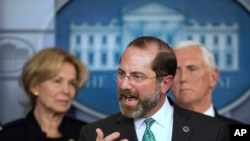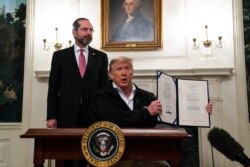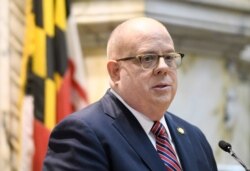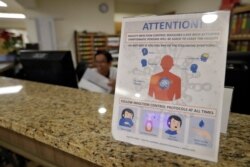As the number of coronavirus infections rises and fears mount about the further spread of the disease, U.S. federal and state authorities are responding with measures aimed at controlling both the virus and the spread of panic.
Federal government officials took the lead, declaring a public health emergency on January 31. The designation is aimed at marshaling federal funds, health personnel and services in response to the situation.
The announcement came from Secretary of Health and Human Services Alex Azar, who took the action as one in a “series of steps the Trump administration has taken to protect our country.”
What comes after a public health emergency announcement?
The designation allows federal agencies to reduce institutional hurdles to respond swiftly to requests from states by shifting medical employees and capabilities to areas in need.
According to the Department of Health and Human Services, the designation allows authorities to access funds that “may be used to facilitate coordination among federal, state, local, tribal and territorial entities and public and private health care entities” affected by the emergency. The federal government can now access emergency funds to set up diagnostic centers, pay for research for drugs to fight the disease, and support efforts to develop a vaccine against the coronavirus.
President Donald Trump on Friday signed an $8.3 billion spending bill to fight the coronavirus. The measure had received bipartisan support in both chambers of Congress.
The designation also allows for cooperation among a number of government structures, in particular the use of “military trauma care providers,” to assist in responding to increased demand for services.
Immediately after the announcement of the public health emergency, the Department of Health and Human Services and the Centers for Disease Control and Prevention identified a number of military bases across the United States to receive and quarantine individuals from China and other countries where the infection had spread.
The national public health emergency allows state and local governments to use federal grant funds to face the problem in their communities.
Response at state level
Individual states have also taken measures by declaring public emergencies, after identifying cases of coronavirus in their communities. On Thursday, Maryland became the latest U.S. state to declare a state of emergency, immediately after health officials confirmed the first three cases there.
In announcing the measure, Maryland Governor Larry Hogan said the state of emergency allowed authorities to “further mobilize all available state resources in response to this threat to public health.”
By designating the problem as a state of emergency, state and local agencies can fast-track coordination among teams and departments charged with controlling the spread of the disease.
Besides Maryland, a number of other states, including California, Florida and Washington, have declared emergency measures by setting up operation centers and designated task forces to coordinate with federal authorities and to manage statewide efforts against the infection.
At the state level, authorities focus on identifying vulnerable communities or demographics, such as elder care centers; monitoring communities where cases have been identified to make sure that the disease is not spreading; and setting up specialized centers for diagnostics. The information gathered in communities is shared with the CDC to monitor if the virus is mutating, and to identify the paths of infection.
The public health emergency designation gives federal authorities the right to quarantine infected individuals, as well as persons who have been exposed to the virus because of contact with infected persons.
By Friday afternoon, there were at least 245 confirmed cases of coronavirus in the U.S., and more than 101,000 cases worldwide, according to the Johns Hopkins University.
The school's web page tracks the spread of infection by compiling data from the World Health Organization, U.S. official sources and Chinese national health organizations.











